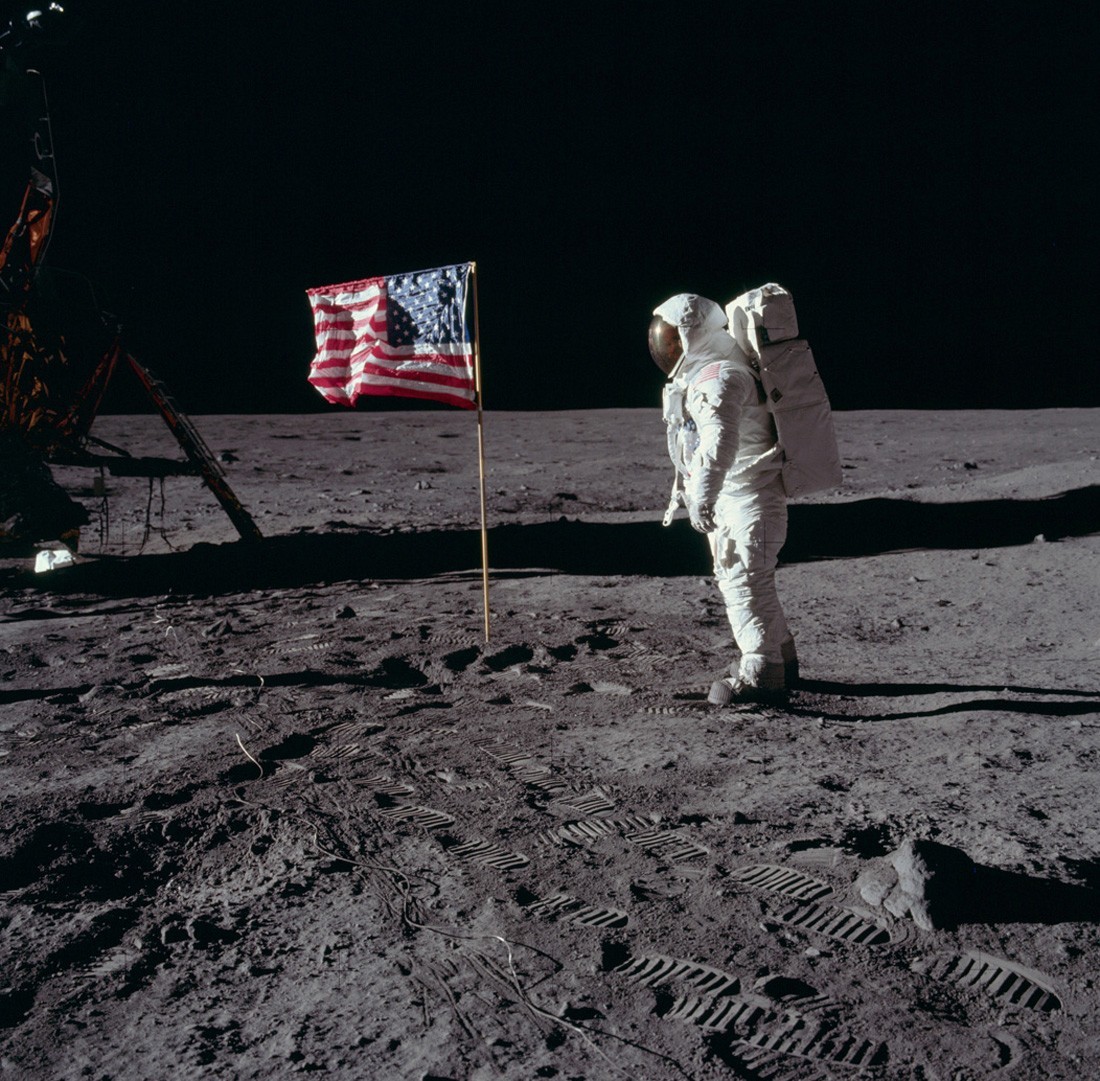
Enough Lying: New Photos of the Moon Landing
It seems like a tabloid creation, but the conspiracy theory was actually put forth by Bill Kaysing, former employee of the company Rocketdyne, which built engines for the Apollo space program. It looks like agit-prop made by the KGB, but any doubts about the authenticity of American moon missions have been repeatedly rejected by astronauts and Soviet rocket scientists. Engineers’ arguments are useless here, though, when it comes to psychology. In spite of comprehensive documentation of the landing, including USSR space program specialists in agreement with NASA, radar data, telescope observation, signals received from the spaceship, recordings of the astronauts’ conversations and televised images, the moon landing conspiracy theories haven’t lost popularity for nearly 50 years.
{“img”:”/wp-content/uploads/2015/10/Apollo_001.jpg”}
By different accounts, 6 to 20% of Americans don’t believe that the moon landing actually happened and that the photos and videos distributed were made in studios on Earth. There are even more active conspiracy theorists outside of the US. A fundraising effort began on the Russian crowdfunding platform Boomstarter on October 1st, 2015, in support of creating a microsatellite that would be able to go to the moon in order to capture high-resolution shots of the trails from the six astronaut landings or to refute their existence. The authors expected to collect 800,000 rubles within a month, but they’ve already gotten over a million in three days.
{“img”:”/wp-content/uploads/2015/10/Apollo_002.jpg”}
Paradoxically, the huge collection of documentary material left behind by the Apollo program fuels the idea that it never happened. In part, more than half of the dozens of arguments against the moon landing are based on analyses of photos supposedly taken there. The recent publication of 8,400 pictures of the moon landing on Flickr in 1,800 dpi resolution is likely adding vitality to the discussion. Bird in Flight has chosen several of them in order to illustrate the arguments for and against the conspiratorial versions.
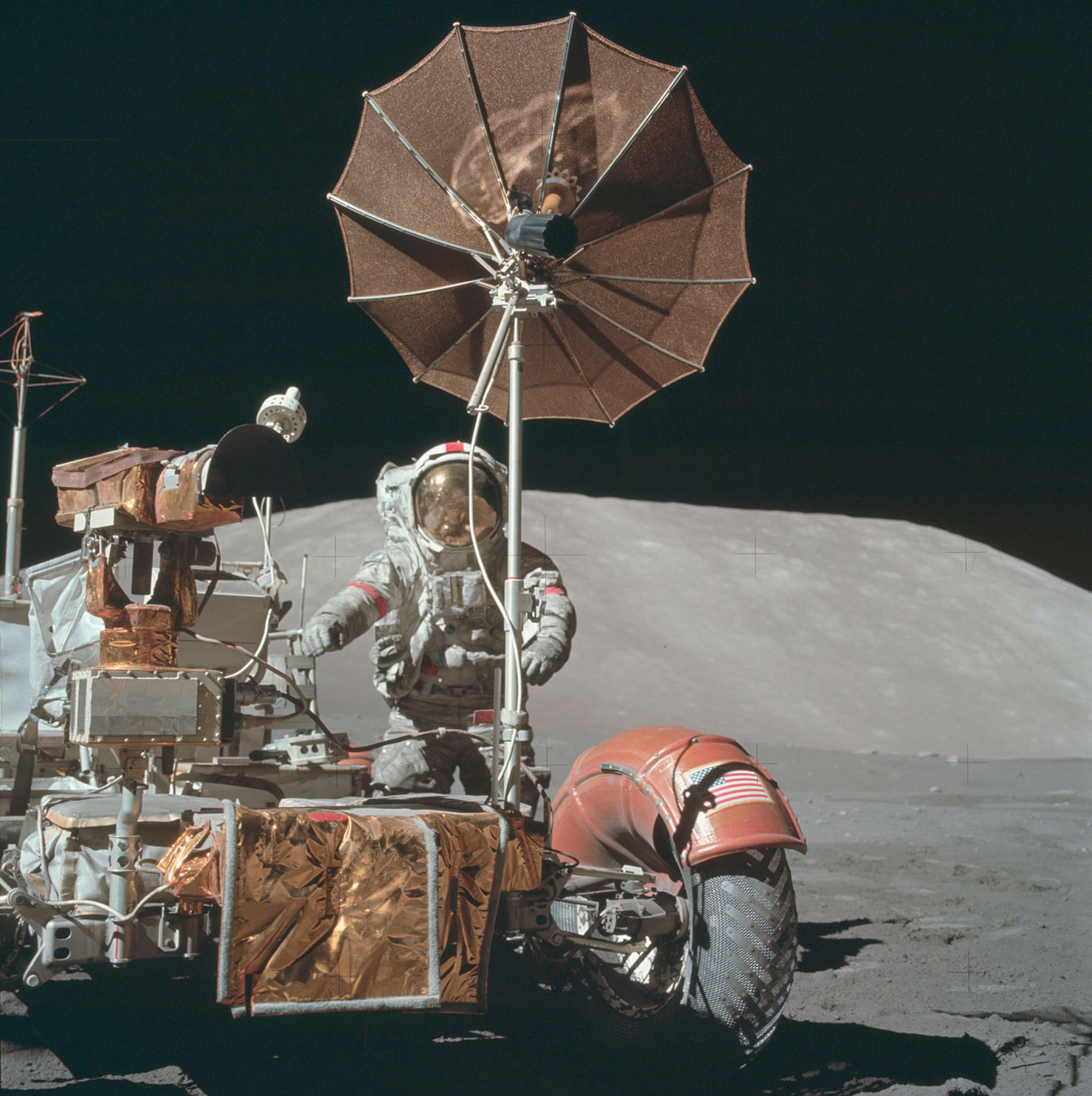
Photo Quality
The Claim: The photos from the moon are too high-quality as if they were done in a studio, but they were surely taken by amateurs in hostile conditions.
Explanation: The astronauts brought the best medium-format camera of the time with them – a Hasselblad 500EL with Zeiss Planar f/2.8 80mm and Zeiss Sonnar f/5.6 250mm lenses and the latest Hasselblad 500EL Data Camera with a Zeiss Biogon f/5.6 60mm lens made especially for NASA. Each camera was carefully calibrated and the Apollo crew undertook an intensive course in photography while wearing the suit and thick gloves and without using the viewfinder, which would be prevented by their helmets.
{“img”:”/wp-content/uploads/2015/10/Apollo_04.jpg”, “text”:””},
{“img”:”/wp-content/uploads/2015/10/Apollo_05.jpg”, “text”:””},
{“img”:”/wp-content/uploads/2015/10/Apollo_06.jpg”, “text”:””},
{“img”:”/wp-content/uploads/2015/10/Apollo_07.jpg”, “text”:””},
{“img”:”/wp-content/uploads/2015/10/Apollo_08.jpg”, “text”:””}
Film Preservation
The Claim: The film should have melted from the extremely high daytime temperatures on the moon.
Explanation: It’s true that the sun heats the surface of the moon up to 120 degrees Celsius, but the film used by the astronauts was specially made to withstand melting up to 260 degrees Celsius. In addition, the body of the camera was protected from direct sun rays and the vacuum created ideal thermal isolation.
{“img”:”/wp-content/uploads/2015/10/Apollo_09.jpg”, “text”:””},
{“img”:”/wp-content/uploads/2015/10/Apollo_10.jpg”, “text”:””},
{“img”:”/wp-content/uploads/2015/10/Apollo_11.jpg”, “text”:””},
{“img”:”/wp-content/uploads/2015/10/Apollo_12.jpg”, “text”:””},
{“img”:”/wp-content/uploads/2015/10/Apollo_13.jpg”, “text”:””}
Shadows
The Claim: The shadows of the astronauts and their equipment, in the presence of the sun and thus the only source of light, should fall in one direction. They fall in different directions in the photos, as if the scene was lit by several projectors.
Explanation: The astronauts always took care to set foot on the moon when the sun was situated low on the horizon and the rays fell gently in order to avoid high temperatures. This is why the different elevations and craters greatly affected the direction and length of the shadows. The laws of perspective were also in play when the shadows seemed like they were coming from one point on the horizon.
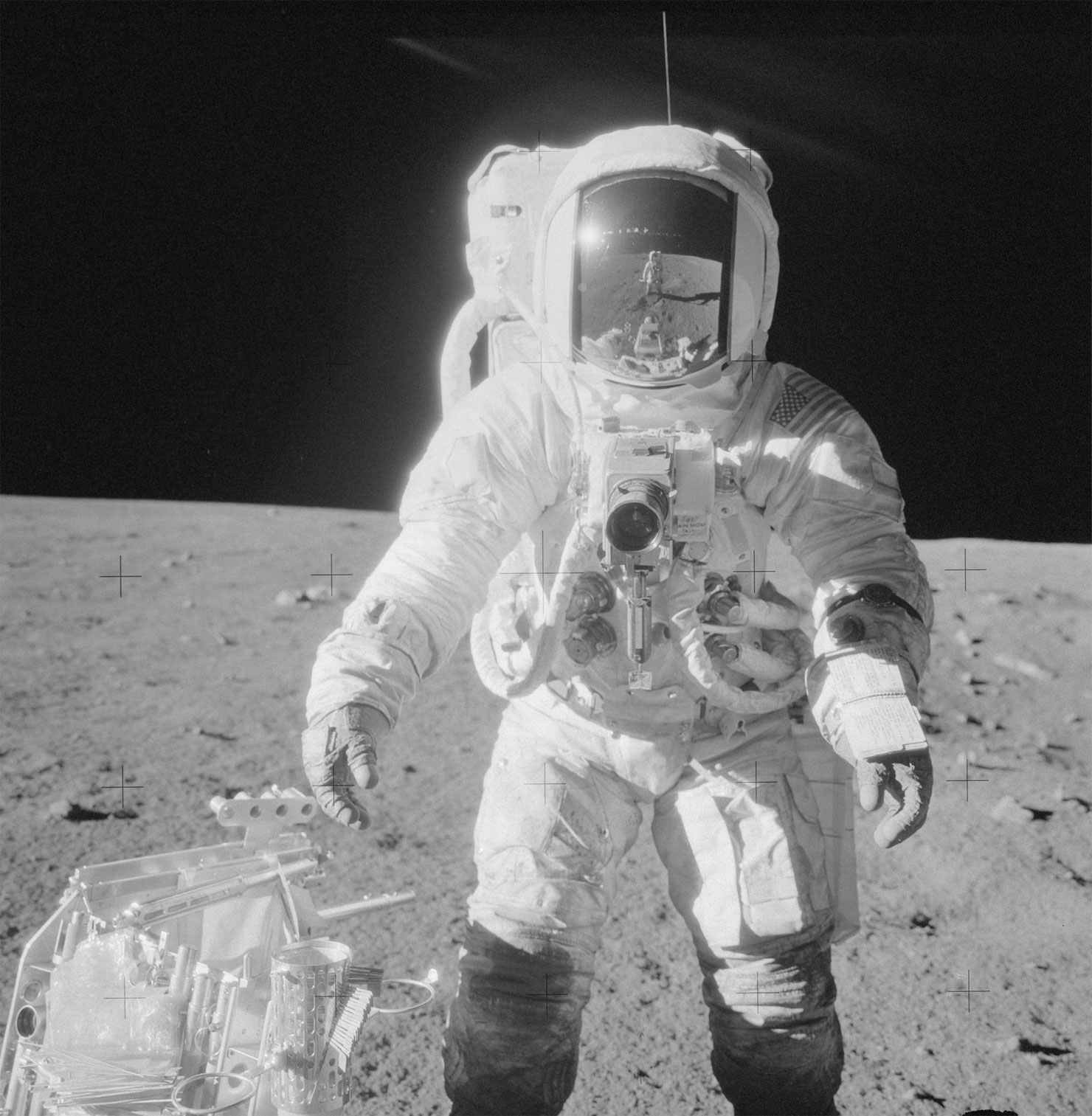
Stars
The Claim: Stars aren’t visible in the photos. At the time it was difficult to predict what a starry sky would look like from the surface of the moon and NASA decided to erase them from the photos.
Explanation: First, the shutter speed had to be set very fast for the cameras of the era in order to capture the surface of the moon while it was flooded with bright sunlight, and this didn’t allow for the viewing of specks of stars against a pitch-black sky. It would have been possible to shoot the stars using a slow shutter speed, but then there would have been overexposure of elements crucial to the shoot: the astronauts, elements of the landscape and the descent capsule, among other things. Secondly, the stars are still visible in parts of photos taken from the dimly lit cabin during the flight.
{“img”:”/wp-content/uploads/2015/10/Apollo_15.jpg”},
{“img”:”/wp-content/uploads/2015/10/Apollo_16.jpg”},
{“img”:”/wp-content/uploads/2015/10/Apollo_18BIG.jpg”}
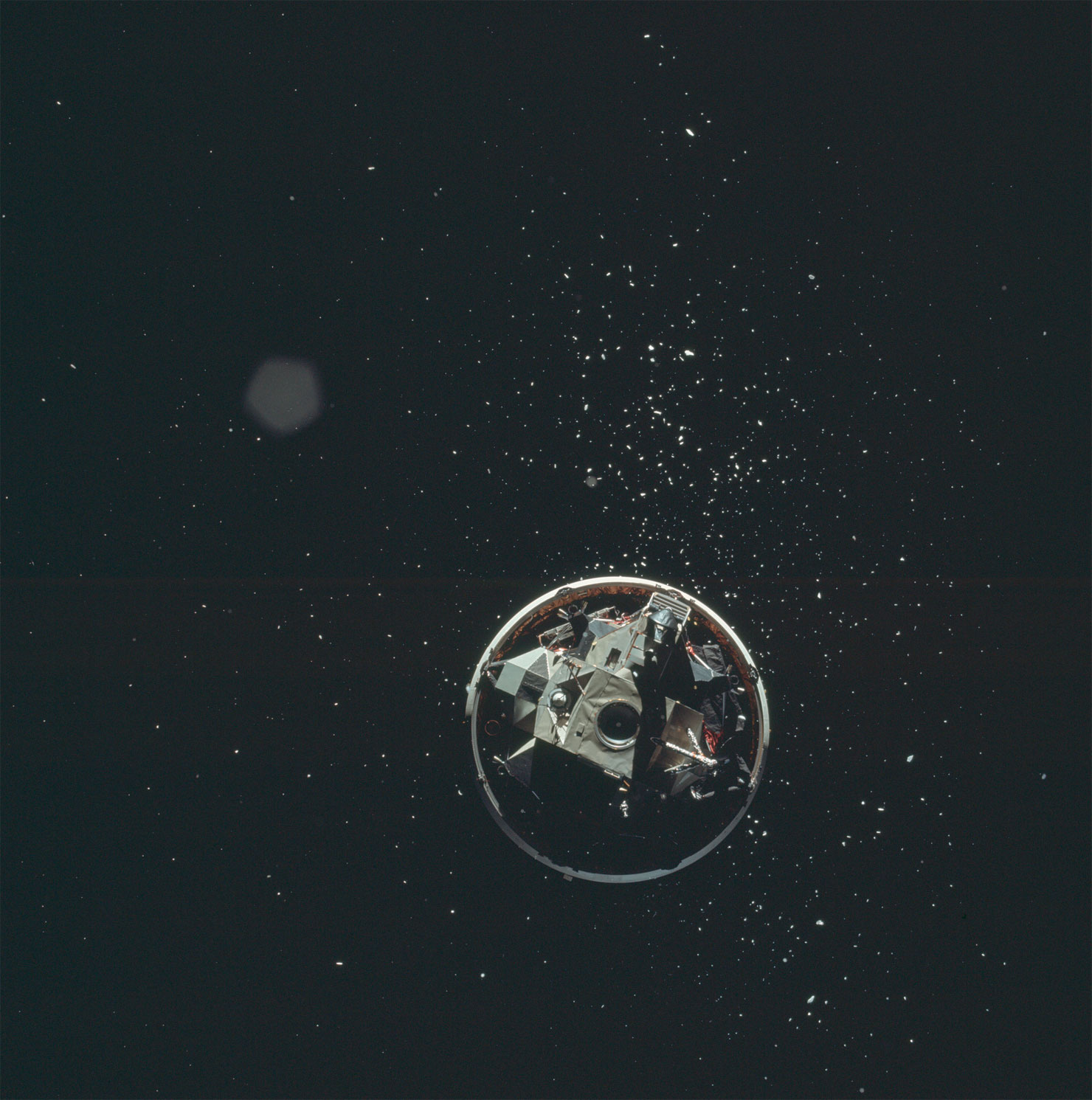
The Flag
The Claim: The flag wouldn’t be able to flutter like it does in the photos in an atmosphere without air.
Explanation: The flag was oscillating during the flight, and when the first expedition planted it they couldn’t completely fix the horizontal bar of the L-shaped structure that held it up. The accidental effect was a flag “waving in the wind”, which the astronauts liked, and later on they fixed these structures the same way on purpose.
{“img”:”/wp-content/uploads/2015/10/Apollo_19.jpg”, “text”:””},
{“img”:”/wp-content/uploads/2015/10/Apollo_20.jpg”, “text”:””},
{“img”:”/wp-content/uploads/2015/10/Apollo_21.jpg”, “text”:””},
{“img”:”/wp-content/uploads/2015/10/Apollo_22.jpg”, “text”:””},
{“img”:”/wp-content/uploads/2015/10/Apollo_23.jpg”, “text”:””}
The Module’s Tracks
The Claim: It’s impossible that the bearings of the 17-ton Lunar module and its rocket engines didn’t leave marks on the surface, but the astronauts’ footprints were clearly visible at the same time.
Explanation: The module weighed about 1,220 kilograms after landing, after taking into account the weak lunar gravity and the calculation of fuel with an oxidizing agent spent in-flight. Also, the area of its support beams was significantly larger than the astronauts’ footprints, such that its pressure on the surface was lessened.
During the last phase of the moon landing, the rocket engine developed traction several times less than maximal, which only thanks to the weight of the module didn’t tip over. The pressure on the surface at that moment was less than 1/10th of the atmosphere, which is to say that it was not nearly enough to produce a crater.
{“img”:”/wp-content/uploads/2015/10/Apollo_24.jpg”, “text”:””},
{“img”:”/wp-content/uploads/2015/10/Apollo_25.jpg”, “text”:””},
{“img”:”/wp-content/uploads/2015/10/Apollo_27.jpg”, “text”:””}
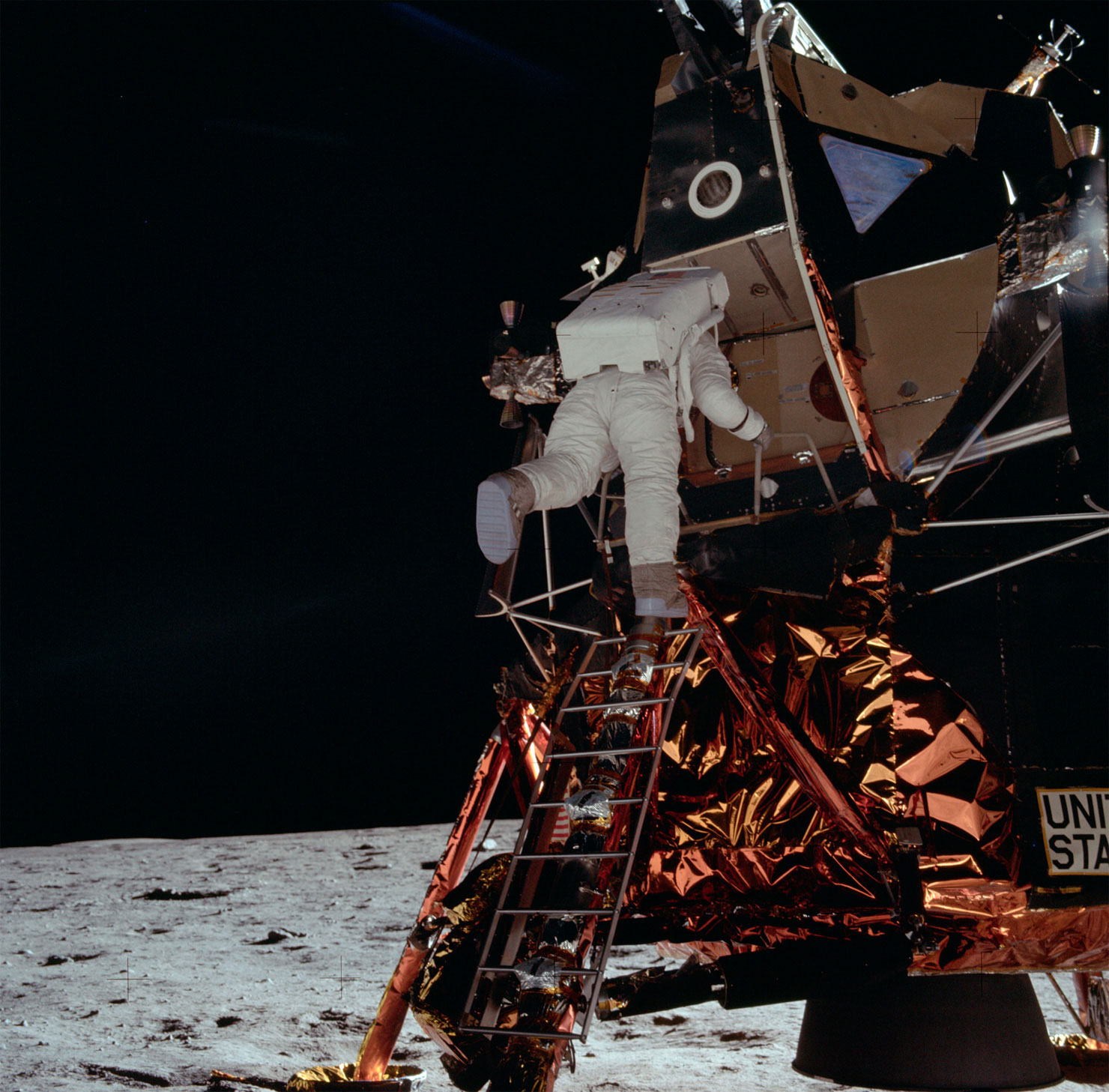
The Footprints
The Claim: The astronauts’ footprints are so clear that it’s as if they were formed in wet sand, but there isn’t any water on the moon.
Explanation: The astronauts moved by jumping, leaving deep dents in the lunar dust that is never blown over by wind. The clarity of the footprints also confirms the absence of an atmosphere; the grains of sand, absent water and wind, have sharp edges which link one to another.
{“img”:”/wp-content/uploads/2015/10/Apollo_28.jpg”, “text”:””},
{“img”:”/wp-content/uploads/2015/10/Apollo_29.jpg”, “text”:””},
{“img”:”/wp-content/uploads/2015/10/Apollo_32.jpg”, “text”:””}
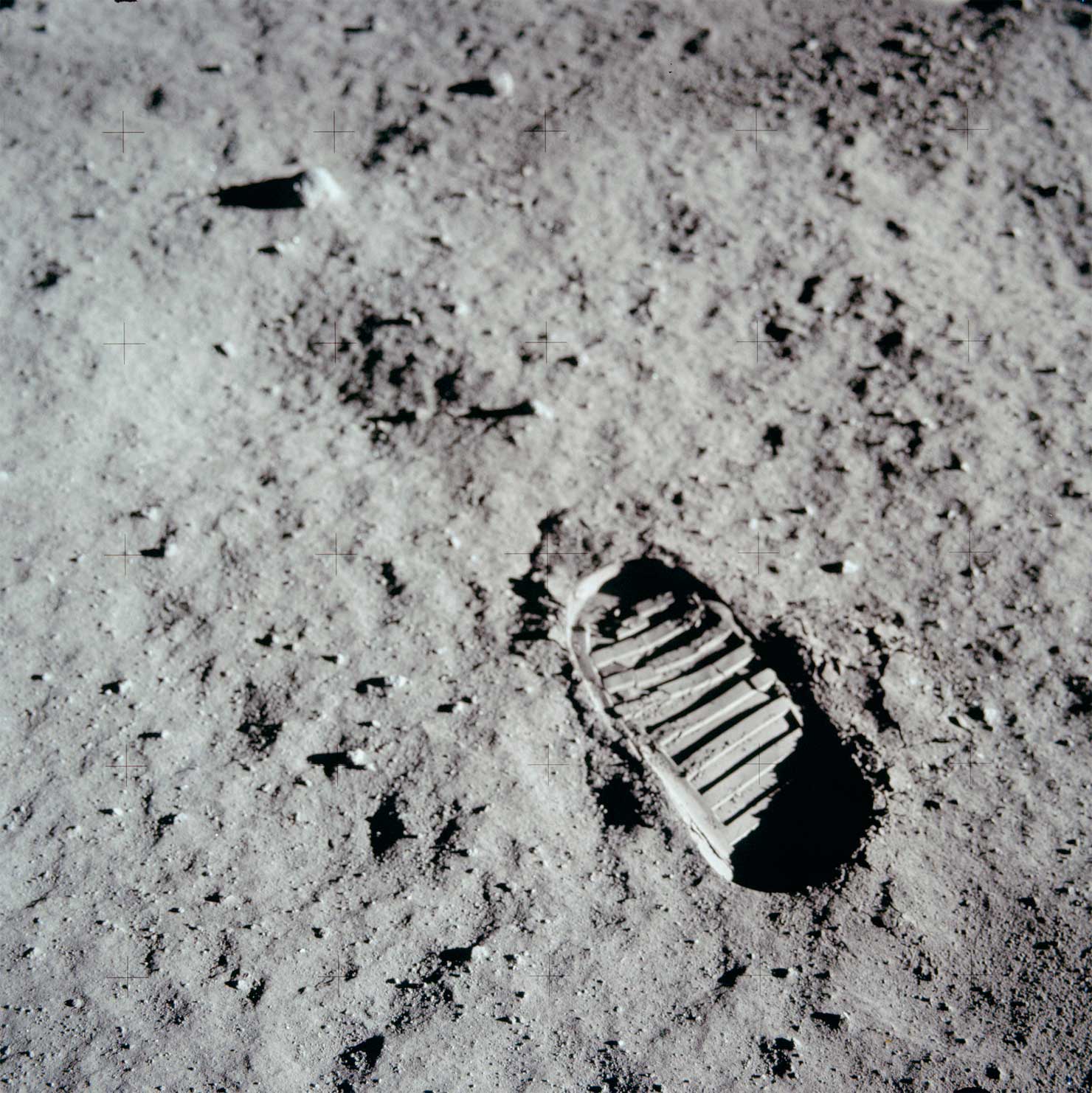
The Height of the Jumps
The Claim: Gravity on the moon is 6 times less than on Earth, and it follows that you can jump 6 times higher there. However, the recorded jumps are too low for some reason.
Explanation: Proportionally, the astronauts’ feet had a reduced adhesive force to the surface by a factor of 6, but their weight and inertia, factoring in the weight of the suit, was higher than it would be on Earth. The astronauts also avoided high jumps given the conditions, in order to avoid falling and damaging the life-support system built into the suit.
{“img”:”/wp-content/uploads/2015/10/Apollo_31.jpg”, “text”:””}
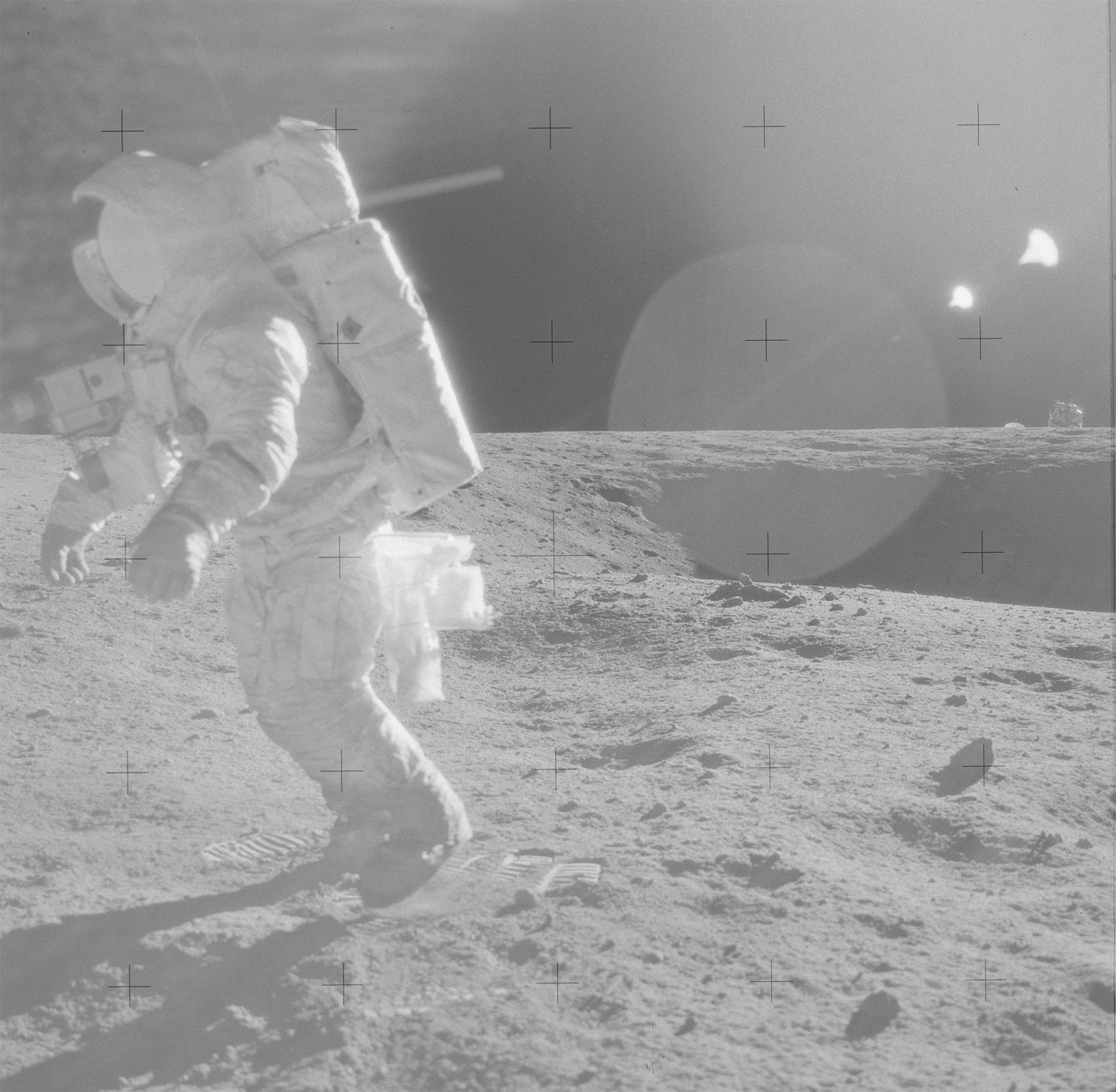
In September 2002, Buzz Aldrin, an Apollo 11 crew member and the second man on the moon, arrived at a hotel in Los Angeles to give an interview for a Japanese educational program. However, he was met at the entrance by Bart Sibrel, a famous conspiracy theorist, who gave him an ultimatum to swear on the Bible that Aldrin had really walked on the moon. After a short back-and-forth in which the astronaut was called a thief, a coward and a liar and accused of taking money to spread a story about the fake moon landing, the 72-year-old Aldrin punched Sibrel in the jaw. Though the victim called the police and filed a suit, his actions were labeled as provocative and the charges against Aldrin were dropped.
“Our return to the moon will not be an achievement now. It will be a foolish waste of resources and it’s likely that we’ll be met there by the Chinese. It sounds great: ‘Let’s go, and this time we’ll stay there!’ But I don’t understand why you would suddenly want to stay on the moon.”
Buzz Aldrin
All photos: Project Apollo Archive / NASA






